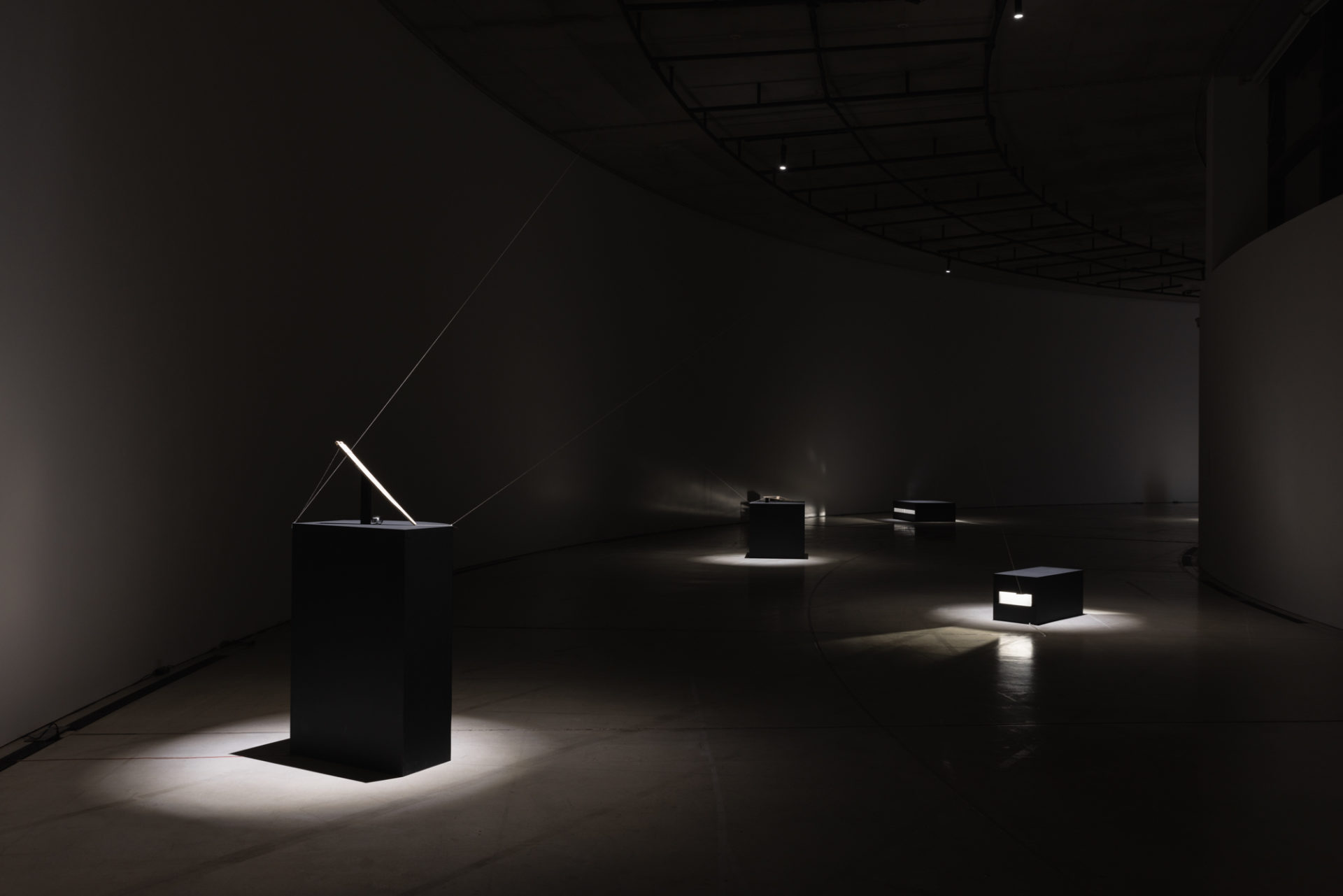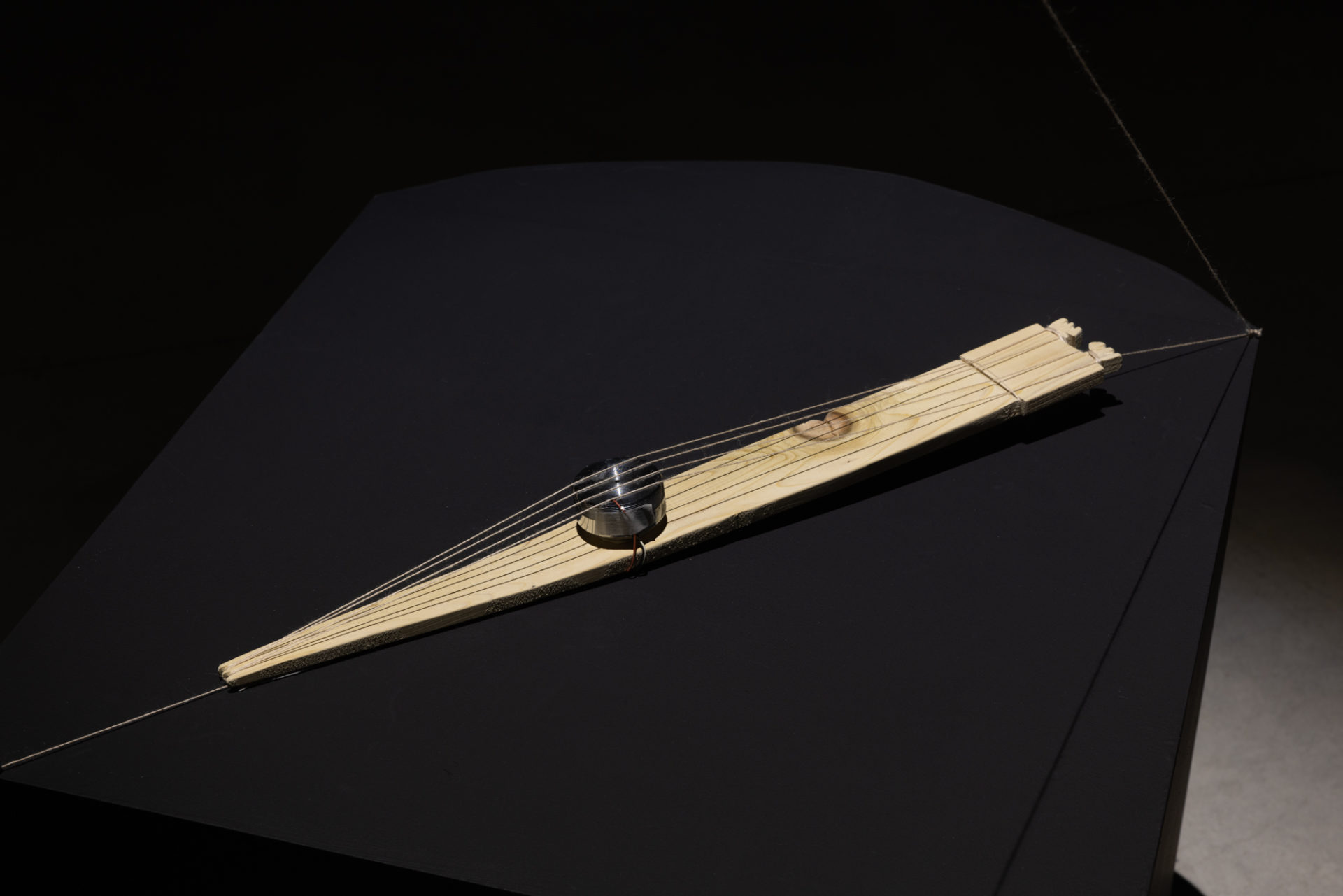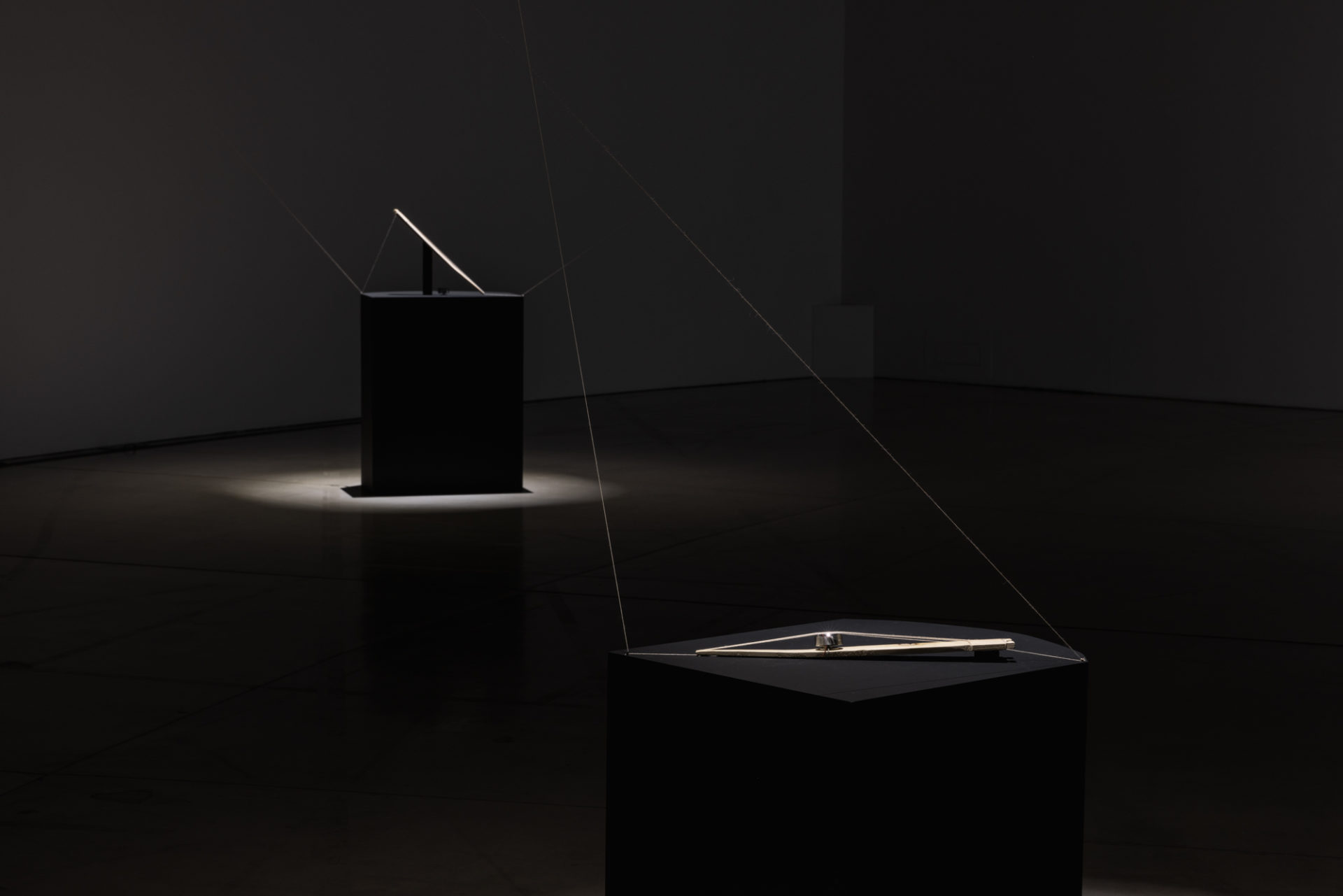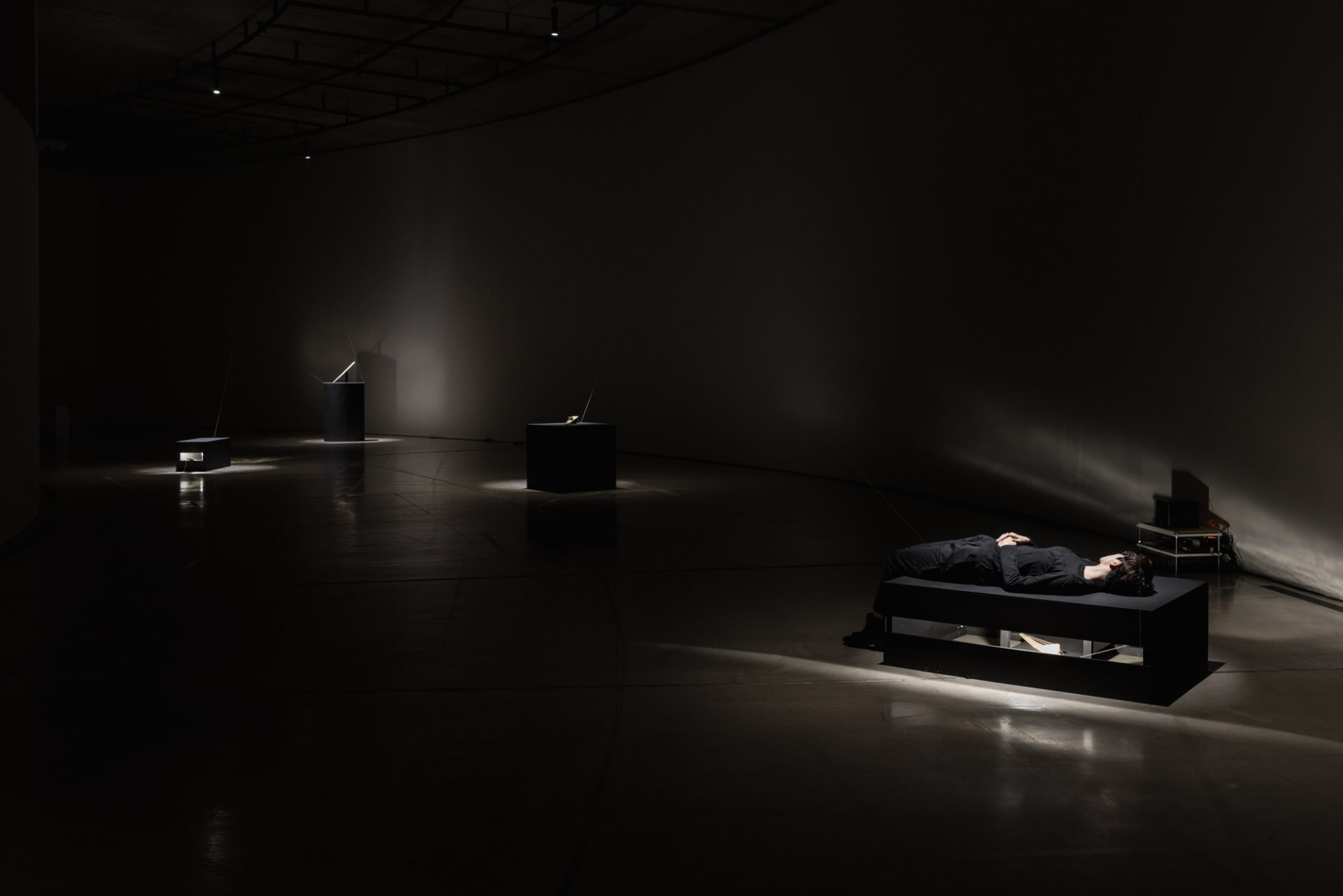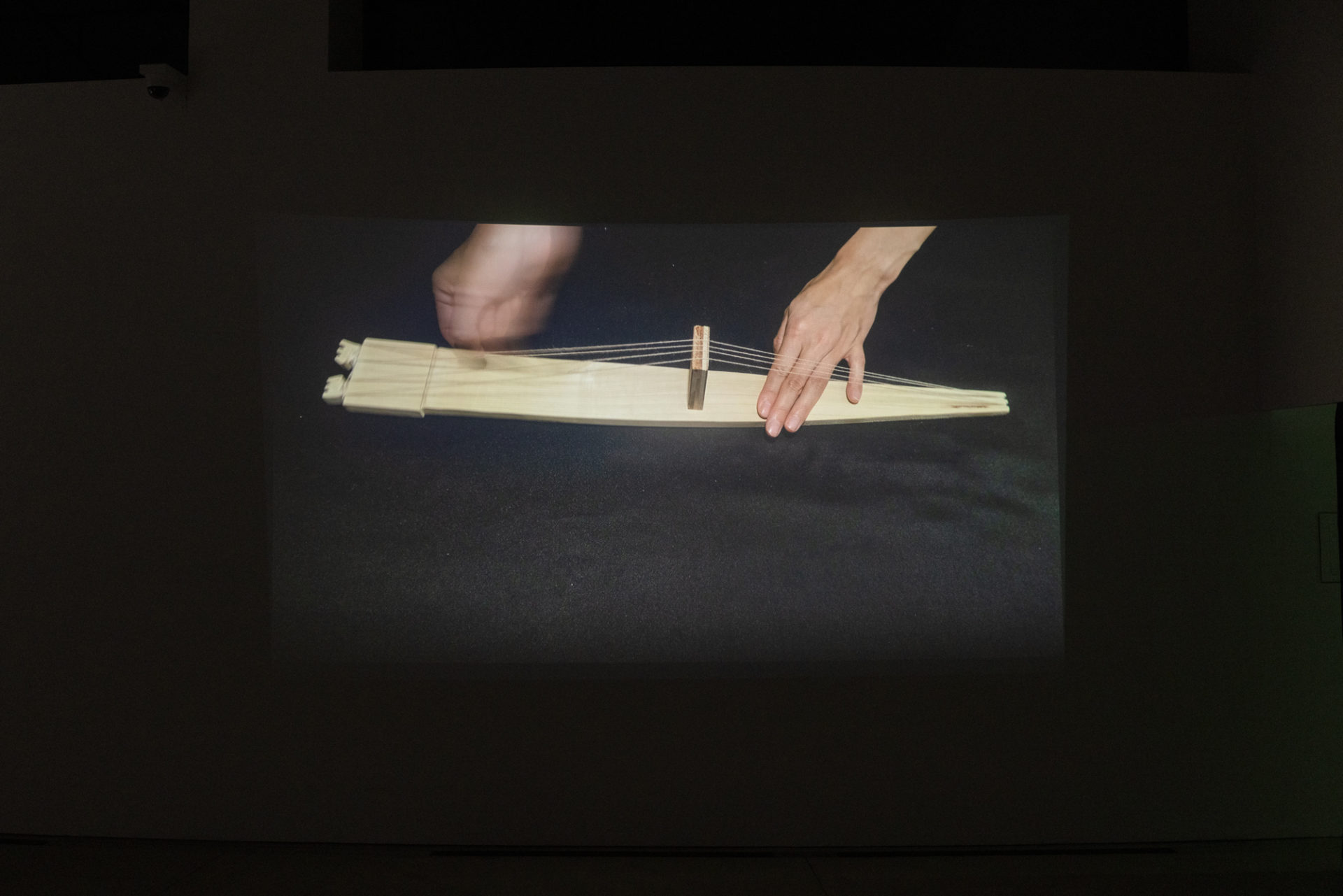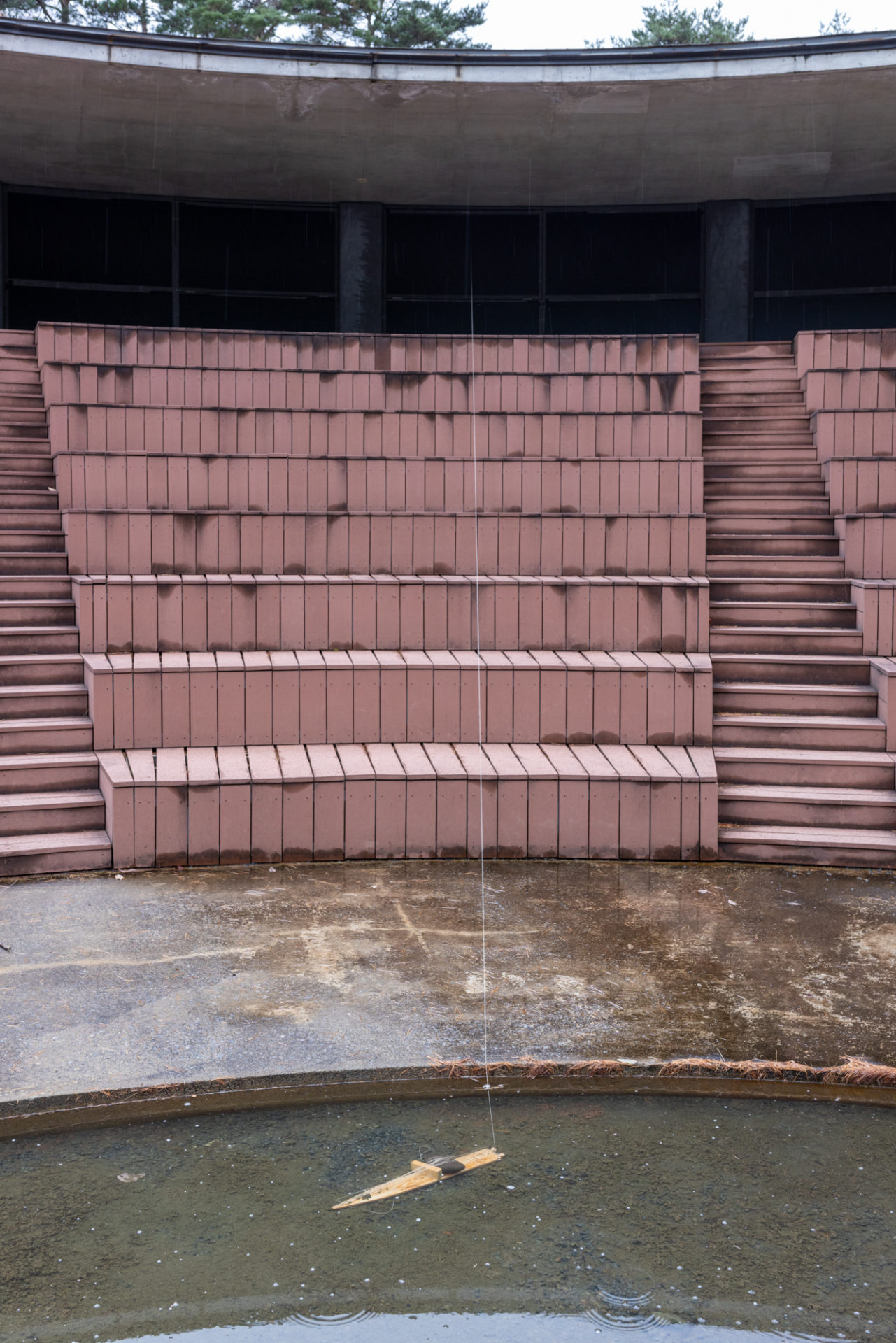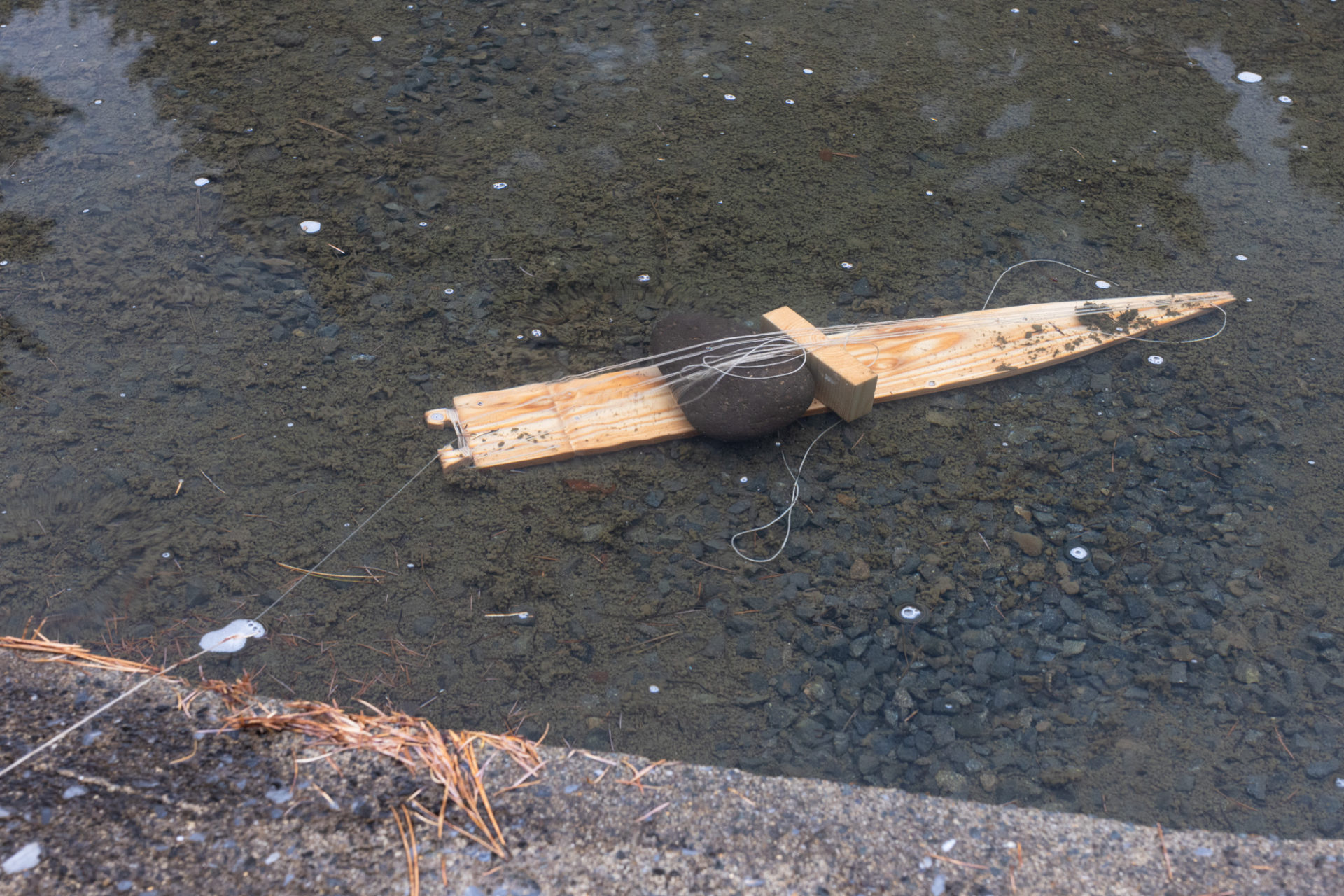Hojo Tomoko’s work during her residency was based on research on the ‘Jomon Koto’ (Jomon harp), a spatula-shaped wooden object excavated at the Korekawa Nakai site in Hachinohe city, Aomori prefecture. The object is believed to be the oldest surviving string instrument in the world, but the way it was played on r strung, or the location or situation in which it was played, remain unknown. What the artist attempted was to recreate the Jomon Koto, and to play it in a place with a similar geological condition to the stratum where the koto that reminded in the ground for about 3,000 years, so to allow its notes to be amplified within the natural resonances of the place, thus unearthing the sounds that have been buried in history.
This exhibition is composed of a 8.1 channel sound installation and a video work that make use of the unique reverberations and form of Gallery A. In addition to the sounds of the Jomon Koto, the installation includes sounds in natural environments such as near bodies of water or on the snow, as well as recordings made by using reverberating object such as earthenware that were typically used in the Jomon period to which the Jomon Koto dates back. The sounds of birds, songs, and walking, sounds reminiscent of the rumblings of the earth or of the wind— these can be not only heard but also felt as tremors, when one sits on and touches the base of the koto. The perception of the installation, as well as the imaginations that it inspires, change according to the position where the sounds are heard and by the way those sounds can be touched, Moreover, the way the strings running throughout the space continue outside of the windows suggest a connection between the unearthed sounds (tremors) and the contemporary times.
There is no way to know how people felt about and moved their bodies to sounds before the concept of music was born. It is also uncertain whether music will be performed and listened to in the same way in the future as it is now. These facts necessarily bring to light the limited nature of what we call music. In this exhibition, Hojo creates a place where visitors can contemplate the sounds that once resounded in Aomori, while also opening the possibilities of the acts of playing an instrument and listeining in the present and in the future.
[From the text distributed at the exhibition. Partly changed from the original translation.]
北條知子は、青森県八戸市にある是川中居遺跡の出土品の箆(ルビ:へら)型木製品であり、世界最古の現存する弦楽器と言われる縄文琴をリサーチの基点に滞在制作を行いました。しかし、その奏法や弦の張り方、演奏の場所や場面についても判っていません。そこで北條が試みたのは、琴を再現し、約3000年もの間、埋まっていた地の地質的条件に似た場所や自然の響きの中で演奏し、増幅させることで、歴史に埋もれた音を掘り起こすことでした。
本展はギャラリーAの特異な残響と形を生かし、計8.1チャンネルのサウンドインスタレーションと映像で構成されています。琴の音に加え、水辺や雪の上など自然環境での音の響き、土器や反響させる物を利用した録音も含まれています。また鳥の声、歌、歩く音、地鳴りのような轟きや風のような音も、琴の台座に腰掛け、触れてみると、震えとしても伝わります。どの位置で聴くか、と同様に触れることによって感じ方も想像する物事も変わっていくでしょう。また、張り巡らされた糸(弦)が窓の外へと繋がっていく様子は、掘り起こされた音(震え)と現代が繋がることを示すかのようです。
「音楽」という概念が生まれるより前の音にまつわる身体の動きや人の感じ方を知る術はありません。また、未来でも現在と同じ方法で演奏し聴くかも定かではないでしょう。それは必然的に、「音楽」がいかに限定的なものかを浮かび上がらせます。本展で北條は青森の地でかつて鳴り響いた音へ思いを馳せる場をつくり、現在、そして未来の弾く・聴くという行為の可能性も投げかけていくのです。(会場配布資料より)
